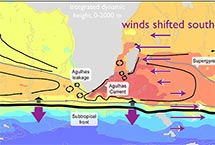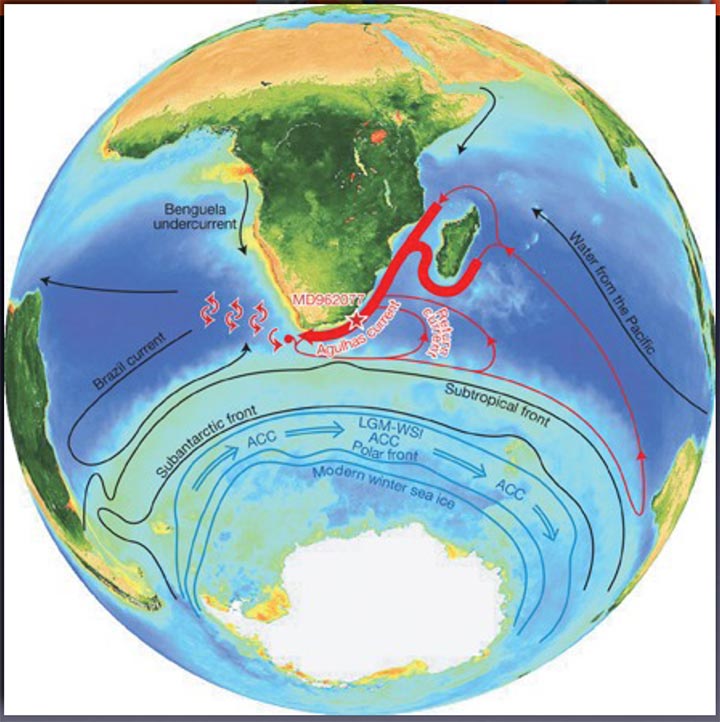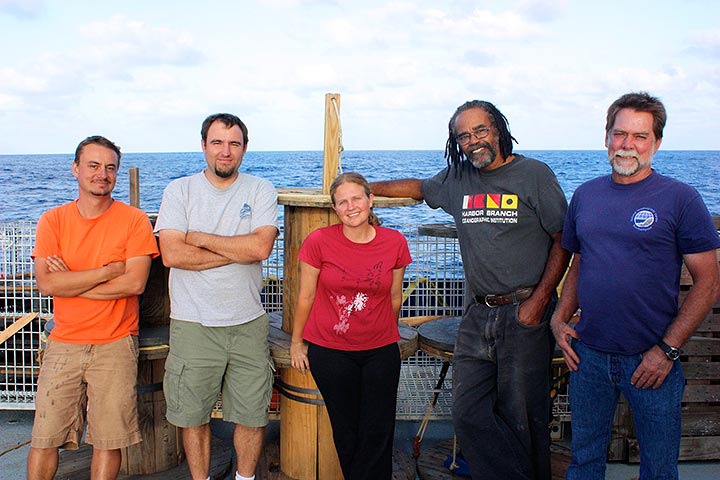
I think I’ve said more than once that subtropical gyres characterize all oceans, “except” one. That one is the Southern Ocean. Unlike all the others (both Pacifics, both Atlantics, and the Indian Ocean), the Southern Ocean is unbounded by continents. In fact, those of us from the Northern Hemisphere (NH) sometimes forget that the two halves of Earth couldn’t be more different. The northern half is crowded with continents—all of Europe, Asia and North America, and sizable chunks of South America and Africa. Only the two smallest continents, Australia and Antarctica, lie wholly south of the equator. Oceans cover some 80% of the Southern Hemisphere (SH). Sail south from Cape Agulhas, which contrary to popular belief is farther south than Good Hope—you’ll encounter no land until you reach Antarctica. The same is true if you sail south from Cape Horn or from Cape Leeuwin, Australia. From each point, you will be crossing the Southern Ocean (SO).

Its southern boundary is distinct, the coast of Antarctica, but the northern boundary is less so. The old salts from square-rigger days, whose lives were determined by wind, knew where to find the boundary. It was 40° South latitude, the beginning of the Roaring Forties. They had a saying for it: “Below forty South, there is no law; below fifty South, there is no God.” The oceanic violence the saying bespoke is provoked by the vicious west wind. On an annual basis, the Southern Ocean is the stormiest region on the globe. When the wind gets going at highway speeds it doesn’t matter what ocean you’re floating on; you’re going to get clobbered. A SO blow may not be more severe than autumn nor-easters in Nova Scotia, winter storms in the North Atlantic, or tropical hurricanes, but these disturbances are seasonal. The North Atlantic relaxes in July, and Florida gets no hurricanes for Christmas. In the Roaring Forties, there is no seasonal respite. This is because the conditions that create storms are omnipresent in the Southern Ocean. And the major driver of those conditions is a continent the size of the U.S. and Mexico combined—covered almost entirely and permanently by a dome of ice 10,000 feet high.

The ice continent perpetually projects its cold northward well into the forties where it meets warm subtropical air. Warm and cold (high and low pressure) never meet peaceably, but abrade and accost each other like rival street gangs in overlapping neighborhoods. And this results in heavy westerly winds constantly orbiting Antarctica, and “causing” the largest, strongest current in the world, the Antarctic circumpolar Current.
As perhaps you’ve noticed, there’s a theme wavering through this research, the link between all oceans of the world and between their kindred fluid the air—and together their causal connection to world climate. Remember our earlier discussion of the communication, via Agulhas leakage, between the Indian Ocean and the broad-scale Atlantic circulation? The leakage is also connected to the powerful west winds in the Southern Ocean described above. As Lisa points out in her Nature paper, in a warming world, the SO belt of westerlies tend to shift poleward. This expands the “gateway” between the northern extent of the westerlies and the bottom of the continent—and therefore allows more leakage of warm, saline Agulhas waters into the South Atlantic, which, alas, has a positive feedback on global warming.
Then there is this: Climate models and evidence found in ocean-sediment cores reaching back some 500,000 years show a correlation between increased Agulhas leakage and warming climate transitions from glacial to interglacial periods like the one we presently inhabit. One must be cautious about drawing categorical conclusions from paleo-records such as sediment cores (similar in concept to tree-ring evidence, but spanning a far longer time period), because it’s hard to distinguish between cause and effect. But there is no question that some connection exists between the Southern Ocean winds, Agulhas leakage, Atlantic circulation—and world climate then and now.










